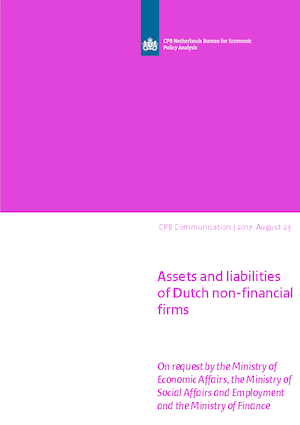Assets and liabilities of Dutch non-financial firms
To answer our first research question, we provided a comprehensive picture of Dutch firms’ balance sheet characteristics over time, firm size, sectors and how they compare internationally. Our financial indicators’ analysis shows that the Netherlands compares favourably with respect to other European countries in all four indicators – debt to asset ratio, solvency, liquidity and profitability – while the general trend has been for an improvement of each financial indicator over time. In particular, the comparison with the average EU5 groups shows that Dutch firms are in a quite stable and relatively good financial situation: debt levels are relatively lower and solvency is relatively high – i.e. Dutch companies rely more on equity as a form of financing. Therefore, although the debt of non-financial firms with respect to GDP has increased after the global financial crisis, we find that the financial position of Dutch firms has improved significantly during this period.
To address the second research question we focused on different characteristics of the firms, in particular firm size. Here we also find that small Dutch firms are performing favourably with respect to the EU5 group and the overall level and trend of the indicators show a healthy financial situation. Although the lowest quartile by indicator (i.e. financial performance) does show more fragile financial positions –as expected from the construction of the indicator– the comparison with respect to the EU5 is still positive. This favourable financial situation also extends to medium and large firms, and also to our sectoral analysis. Moreover, the financial position of the worst performing firms by indicator (first or third quartile) is also relatively good when compared to the EU5 average. However, note that the positive financial situation of the average small firm does not extend to the micro firms, which have been found in a previous study to have a financial position that is more fragile than for other SMEs.
